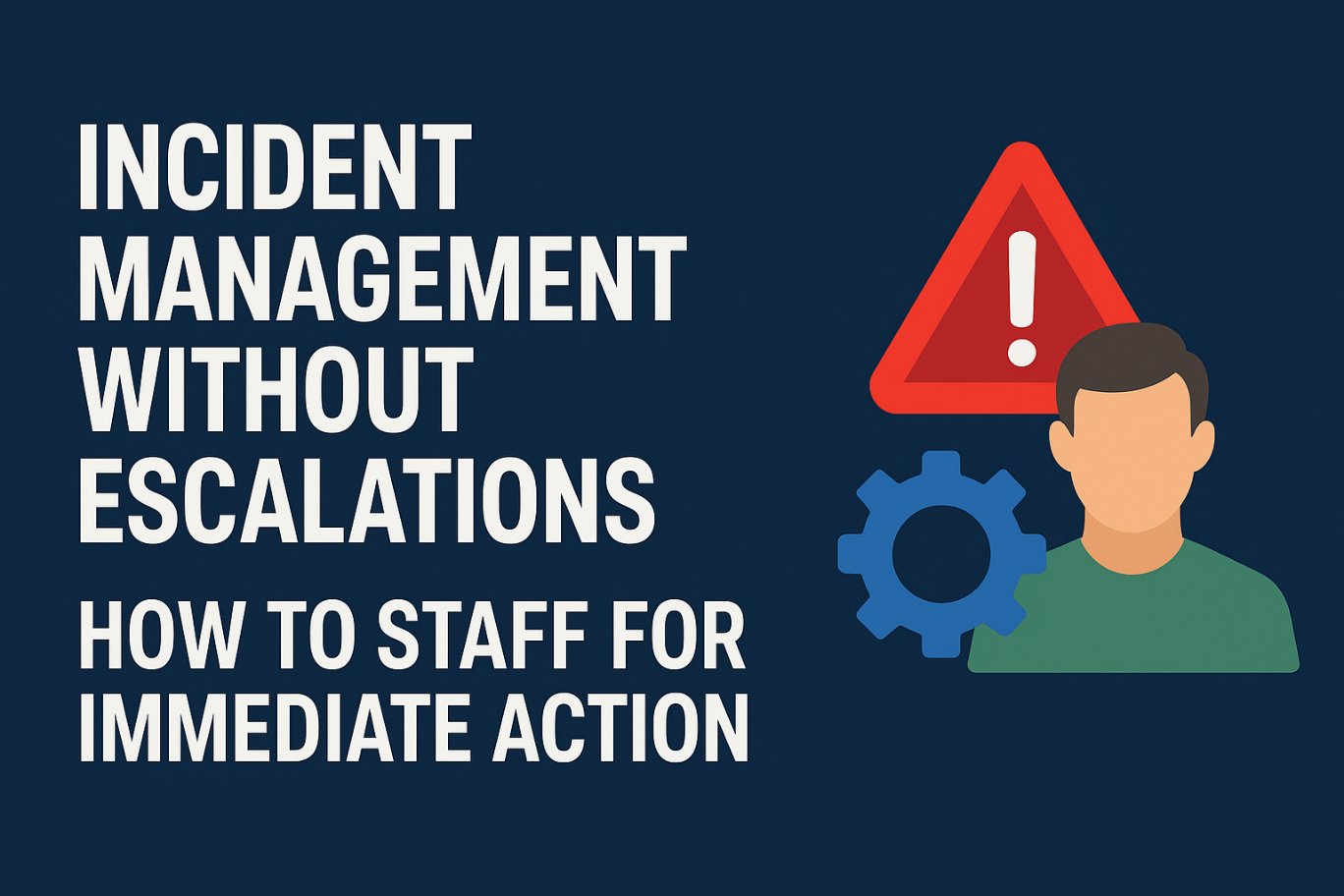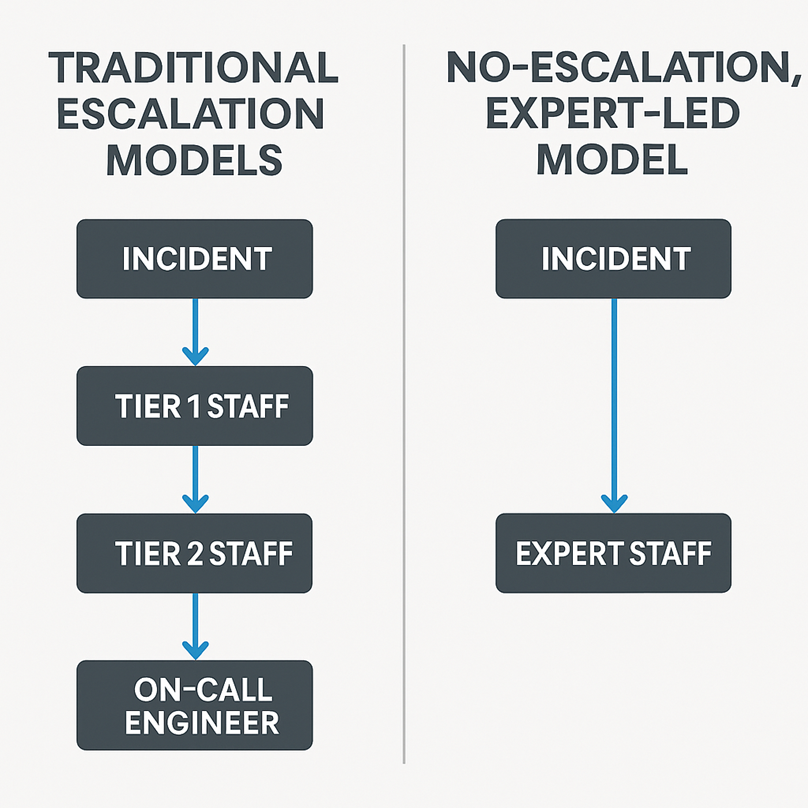Incident Management Without Escalations

In the high-stakes world of online gaming, every second of downtime matters. Traditional incident management models rely on tiered escalation—frontline staff triaging issues and handing them off to more experienced engineers. But this structure creates delays, increases Mean Time to Resolution (MTTR), and frustrates both players and staff.
Today’s leading studios are adopting a faster, more effective model: expert-led incident management, where fully capable engineers staff every shift and take immediate action—no waiting, no handoffs. This article explores how to build and staff for this modern, agile approach to real-time operations.
Why the Traditional Escalation Model Falls Short
While escalation trees once made sense in large, siloed organizations, they’re too slow for the demands of live game operations. Common issues include:
- Delayed Resolution: Frontline responders often lack the expertise or authority to act, creating costly handoff delays.
- Lost Context: Valuable insight is lost as issues pass through multiple layers.
- Higher Downtime: Every minute of delay adds to your MTTR and increases the impact on players.
- Team Burnout: On-call engineers face constant interruptions, leading to fatigue and reduced long-term productivity.
In a 24/7 online world where player expectations are sky-high, this model simply doesn’t keep up.
A Better Approach: Staff Every Shift with Experts
The new standard in incident management puts experienced, empowered engineers directly on the frontline—capable of diagnosing and resolving issues the moment they arise.
The Benefits of a No-Escalation Model:
- Dramatically Reduced MTTR: Immediate action shortens the lifecycle of every incident.
- Improved Player Experience: Quicker resolutions mean less disruption for your community.
- Greater Ownership and Accountability: On-shift experts don’t pass the buck—they solve the problem.
- Healthier Engineering Culture: On-call fatigue is minimized, leading to higher team morale and retention.

How to Build an Immediate-Action Incident Team
Implementing this model requires more than hiring great engineers—it demands the right structure, tools, and processes. Here’s how to do it:
-
Hire for Expertise, Not Just Coverage
Staff every shift with experienced engineers who understand your stack and systems inside and out. Prioritize hands-on incident response experience over generic support roles. -
Create Robust Operational Runbooks
Equip engineers with detailed, actionable playbooks for common scenarios. Include:- Clear triggers and definitions
- Step-by-step resolution workflows
- Escalation fallback paths (only for rare, edge-case scenarios)
- Verification and validation steps
-
Invest in Ongoing Training
Keep skills sharp with:- Regular incident simulations
- Postmortem reviews
- Briefings on infrastructure changes and new risks
-
Empower Decision-Making
Give on-shift teams clear authority to act. Define boundaries, not bottlenecks—engineers should never need permission to protect uptime. -
Ensure 24/7 Expert Coverage
Use shift rotations that prioritize skill parity—so no matter the hour, the expertise is always online.
Conclusion: Faster Resolution, Stronger Operations
In modern game operations, speed equals success. By eliminating outdated escalation structures and empowering frontline experts to take immediate action, you can:
- Improve uptime and reliability
- Reduce incident costs
- Protect your brand reputation
- Strengthen your engineering culture
Ready to upgrade your incident management model? Zumidian delivers 24/7 expert-led incident response without the delays of traditional escalation paths. Let’s talk about how we can help your studio operate faster, smarter, and with fewer player-impacting incidents.


